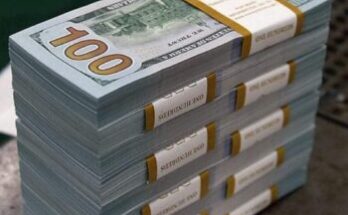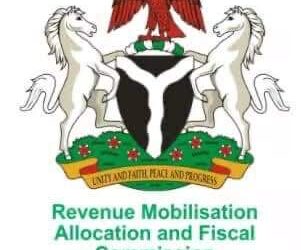Science, Technology and Innovation (STI), is aimed at contributing to the development of national capacities in every field of professionalism in order that it will improve the competitiveness of the productive sectors in the nation. BINTA SHAMA reports.
The Federal Ministry of Science and Technology is an organisation with the mandate to enhance innovation in the country. It is empowered to oversee 17 agencies to enable it achieve its task.
A critical analysis of events from the third FMST Technology and Innovation Expo 2019, which recently took place in Enugu state, show that hard working parastatals, agencies, organisations, and individuals were awarded for their hard-work.
The Raw Materials Research and Development Council (RMRDC), forms an important element in the federal government’s strategy to secure a sustainable supply of raw materials for the nation. This sector is filled with potentials which if accurately processed will get to the consumer where in return it could jump the GDP of the country.
RMRDC clinches second place
RMRDC won big in the Research Institutes category at the just concluded technology and innovation exposition, for its novel research and development breakthrough in the water borne paint from rubber latex.
The FMST organised week-long expo, which is the third in the series and the first to be held in any geopolitical zone in the country (the South-East geo-political zone), featured the participation of exhibitors drawn from Nigeria’s Science, technology and Innovation (STI) community who were assessed by an Assessment and Award Sub-Committee of twenty five (25) membership and chaired by Dr. Manasseh Gwaza, Director, Health and Biomedical Science Department of FMST.
Assessment of participants who exhibited under different platforms of categorization was based on the following templates of consideration: Originality (Novelty/New), creativity/Innovativeness, cost Effective and Efficiency, Local Raw Material content; design, finishing and labeling.
Other considerations were clarity and thoroughness (fluency of written and oral presentation), reproducibility (replicability) and adaptability; patent stage (stage of obtaining patent); and contribution to national economic growth and sustainable development (Relevance to Agriculture, Power, Health, Transportation, Mining, Environment, etc.), including potential for commercialization.
The Exhibitors were classified into four (4) categories of research institutes (RIs), Tertiary educational Institutions (TEIS), Technology entrepreneurs (TEs), Junior Engineers, Technologists and Scientists (JETS).
As part of the methodology for assessing the exhibitors that took part at the expo, the technical assessment team toured the various stands to interact with the exhibitors. Projects and products were scored based on approved criteria. At least 159 individuals and organizations participated and exhibited at least 397 products.
Category of Award
In the end Government science and Technical College Garki, Area 3, Abuja, emerged winner with a score of 83 percent, for turning Rubbish into Innovative products under the JETS category. They were followed by Excellence International School, Jalingo, Taraba State, with a score of 80 percent for their locally made solution, and St. Peters Unity School, Ondo following closely with 79.5 percent for their Evaporating storage device.
Under the Technology Entrepreneurs category, Clarks Pharmaceutical Company, Anambra state, with their Baby Lotion, outscored its competitors with 85.5 percent, while Bravura Electric Products, Akwa Ibom state, with its Automatic Changeover Switch, and Peace Petroleum Nigeria Limited, Enugu state with its Wood Laquer product cam second and third with 84.5 percent and 83.5 percent points respectively.
The Raw Materials Research and development Council (RMRDC) with its 78 percent score for its technology on the development of ‘water borne paint’ derived from rubber latex was awarded second position by the technical assessment team behind the National Space Research and Development Agency (NASRDA), Obasanjo Space Center, Airport Road, Lugbe, FCT with 80.5 percent while the National Agency for science and Engineering Infrastructure (NASENI), with Upgraded science kit and Nigerian Building and Roads Research Institute (NBRRI) were tied for third position with 75 percent scores.
Under the tertiary Educational Institutions category, The University of Nigeria Nsukka (UNN) out classed competitors with its display of Synthesis of Novel Angular Diaphenoxazine ethers contamine phenoxidemoietry which earned it a 72 percent score. University of Uyo, Uyo with its Tukon GUc Herbal Cure for Gastric Ulcer Cure scored 71.5 percent to place second with Usman Dan Fodio University (UDU), Sokoto, hard at their heels with 71 percent to take the third position.
The invention
The Nigerian paint Industry is highly fragmented with over 500 operators in the structured and unstructured market. The total consumption of paint in Nigeria, according to statistics is put at about 336 million per annum, with decorative paints consumption accounting for about 268.8 million liters per annum. Local production is also put at about 201.6 million litres per annum out of which over 134.4 million litres is imported annually.
Development of Water-borne Paints using Blends of Natural Rubber Latex (RN-L) and polyvinyl acetate (PVAc) as Binder was conceived by the RMRDC to solve the challenge of importation of PVAc with locally available substitutes. Technically, this involved the blending of natural rubber latex (NR-L). The PVAc/NR-L was successfully blended and the optimum blend (NR-25) was found to be suitable for paint production.
With a production capacity of over 157, 000 tonnes in 2010, according to FAO, and a propensity to grow by 4.7%, Nigeria’s capacity for sustainable production of rubber latex, the basic raw materials for PVAc cannot be challenged and the RMRDC’s achievements in this direction has therefore created a new area in the utilization of natural rubber latex in the country.
The sustainability of the supply of the natural rubber latex for paint production in the country is thereby guaranteed in view of the preponderances of rubber plantations in Abia, Anambra, Akwa Ibom, Rivers, Ebonyi and Bayelsa, including Ondo, Edo, Ogun, Delta and Cross River states of Nigeria.
Importance of PVAc in water-borne paint
PVAc is used as a binder in the paint manufacturing industry. The largest markets for polyvinyl acetate and copolymers are adhesives (40-45%) of the total production and coatings (35-40%), followed by textiles, paper, and construction. Roughly 50% of polyvinyl acetates are consumed as homopolymers, with the rest consumed as copolymers containing monomeers such as n-butyl acrylate, 2-ethylhexyl acrylate, ethylene and versatile ethers.
In 2010, Nigeria imported PVAc to the tune of $1.22M which accounted for 0.75% of global importation of PVAc and the third largest importer in Africa. This necessitated the need to source and develop local alternatives that would reduce importation to acrylic resins currently dominating the paint industries in favour of PVAc/NR-L, a less costly synthetic resin, with attendant savings in foreign exchange.
There are also centers for processing rubber as well as availability of farmers in the 11 rubber producing states in the country.
The achievement of the substitution of 25% of PVAc with NR-L is therefore guaranteed to save the country’s foreign exchange being spent on importing PVAc, even as it is projected that the establishment of an 800mt/year plants for the production of the binder from natural rubber latex will provide a surplus of 8800mt of binder for the water paint production in the country per year, thereby, generating over N1 billion worth of investment and creating a lot of employment opportunities.



